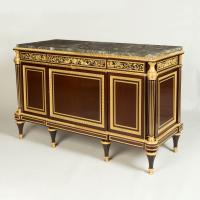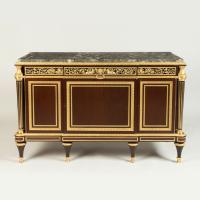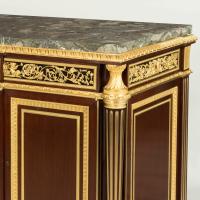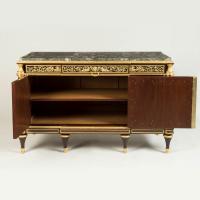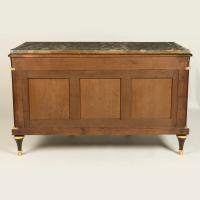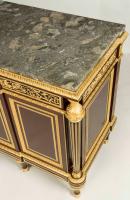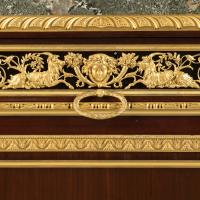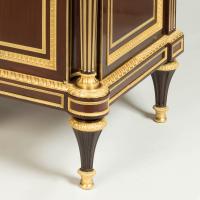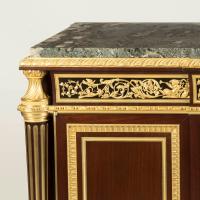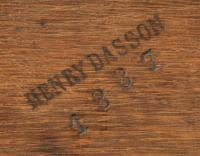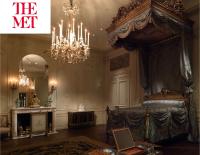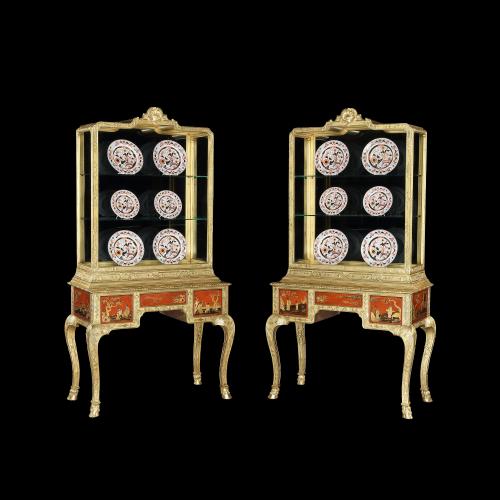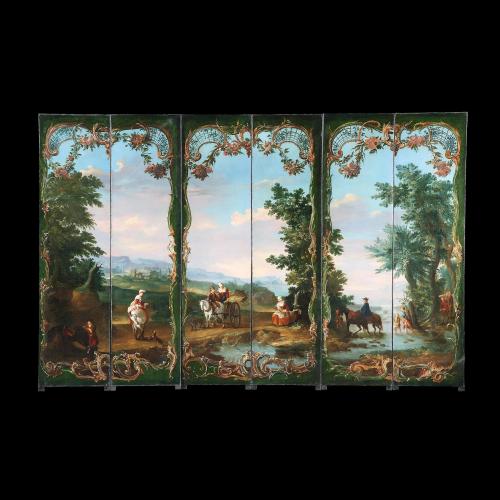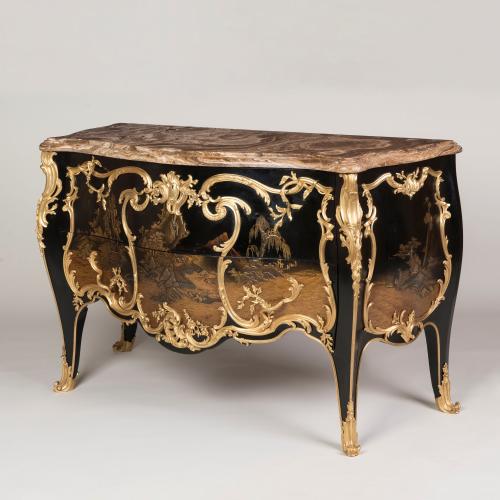
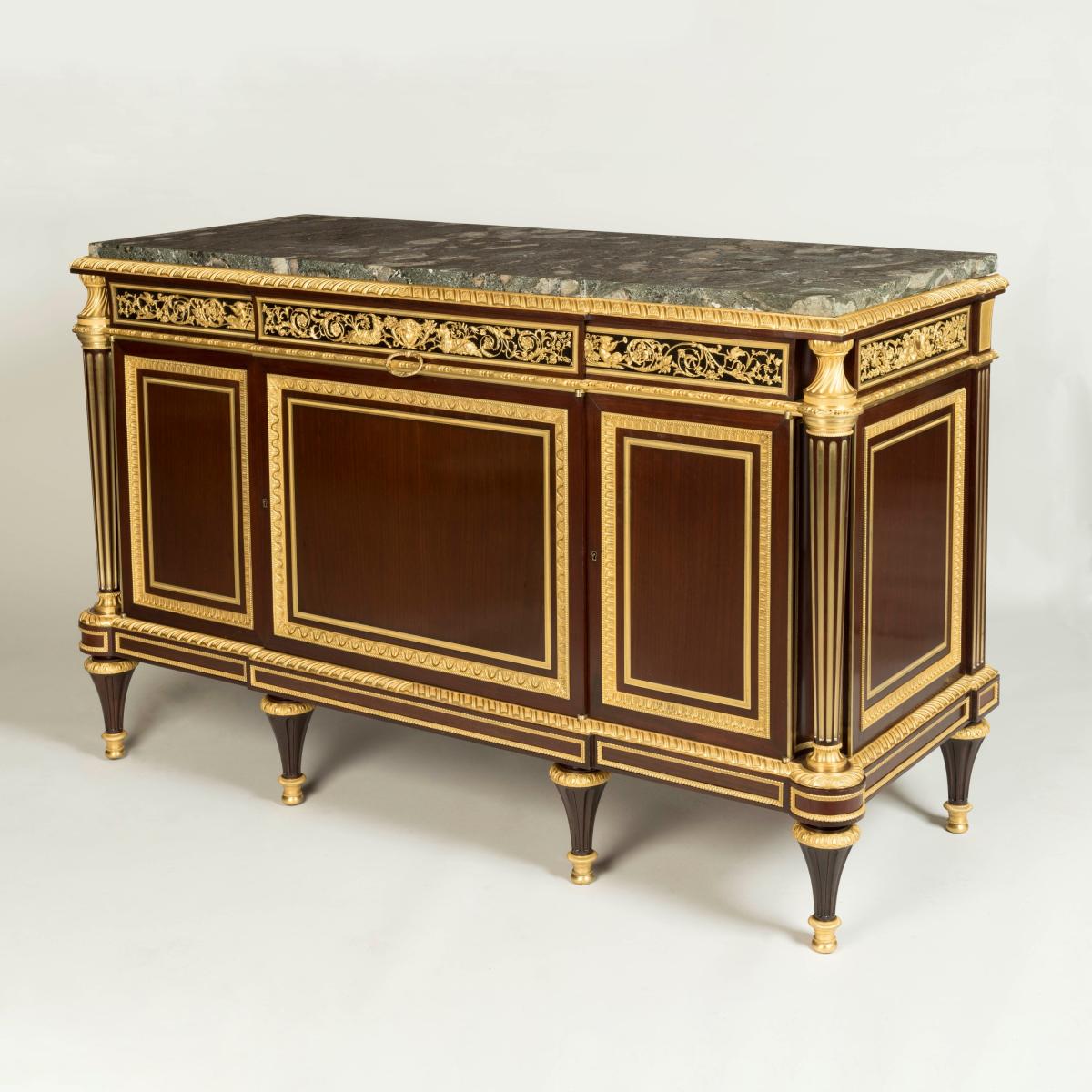
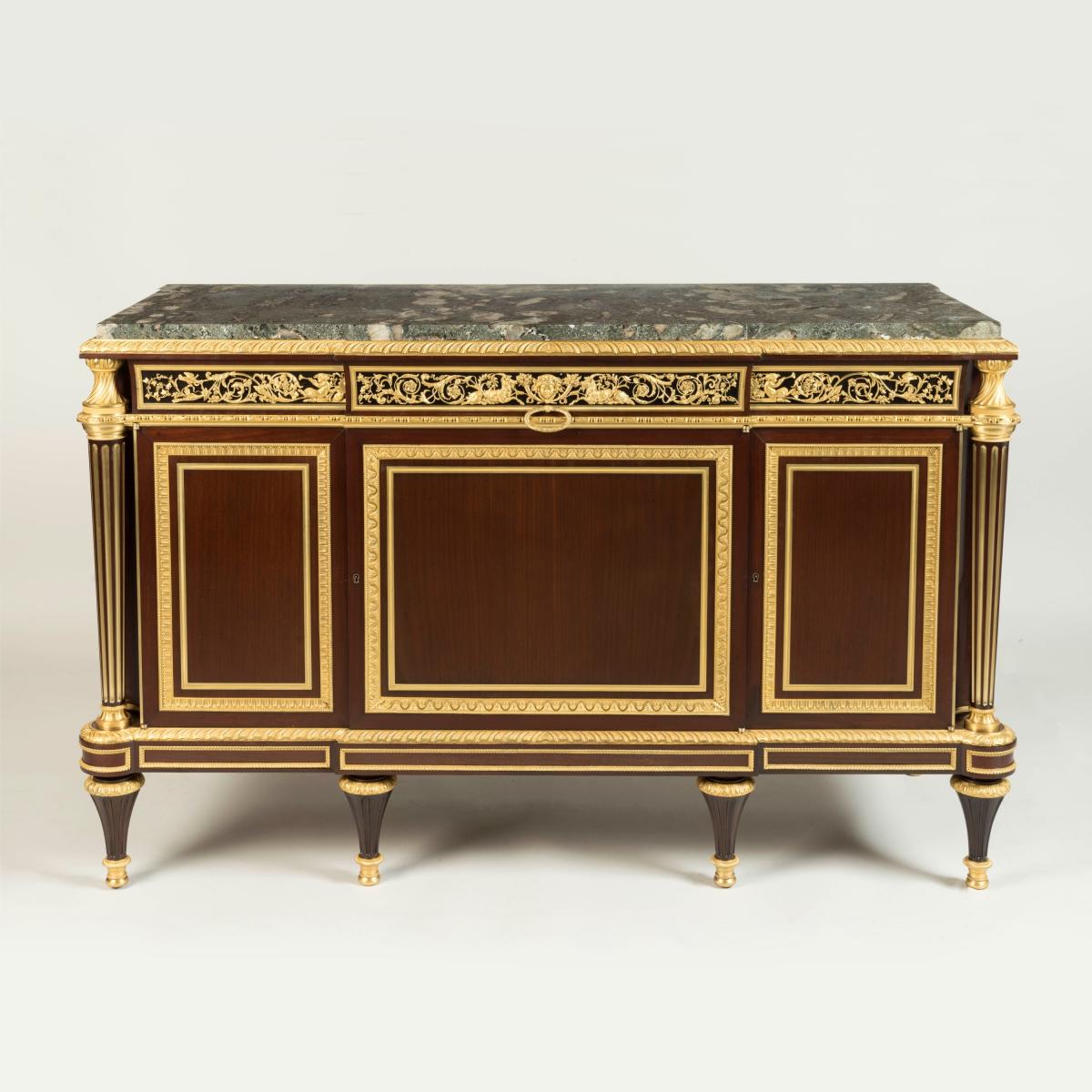
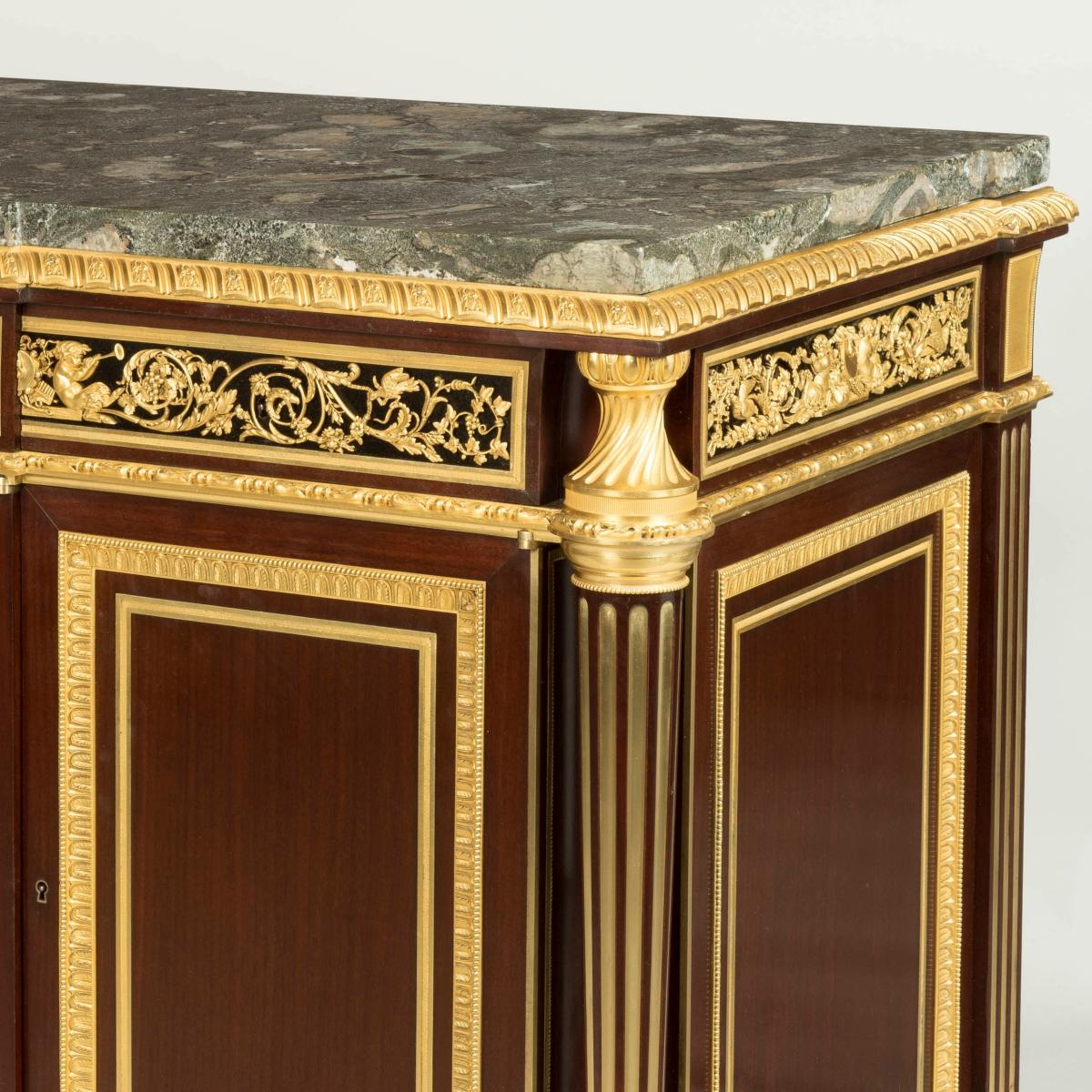
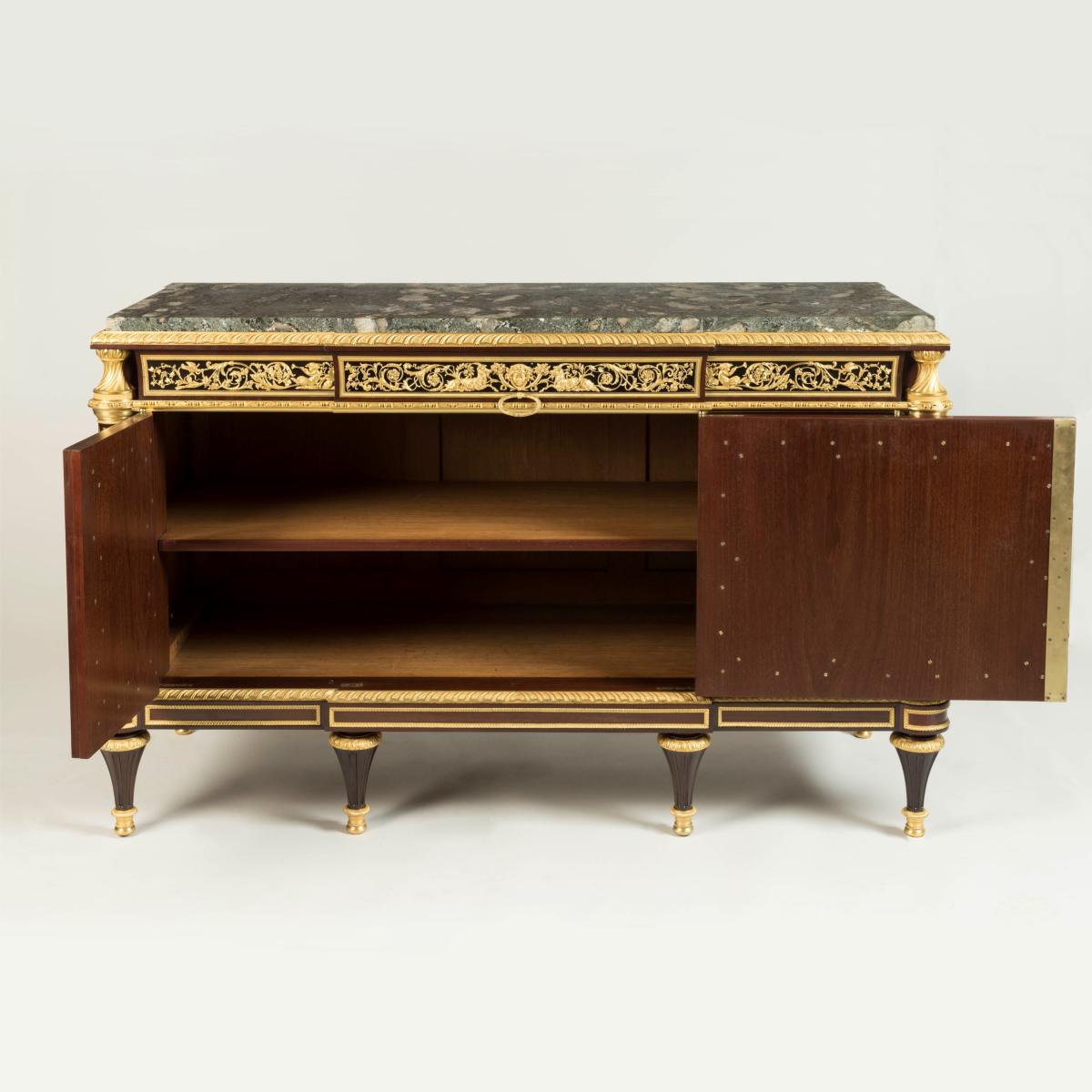
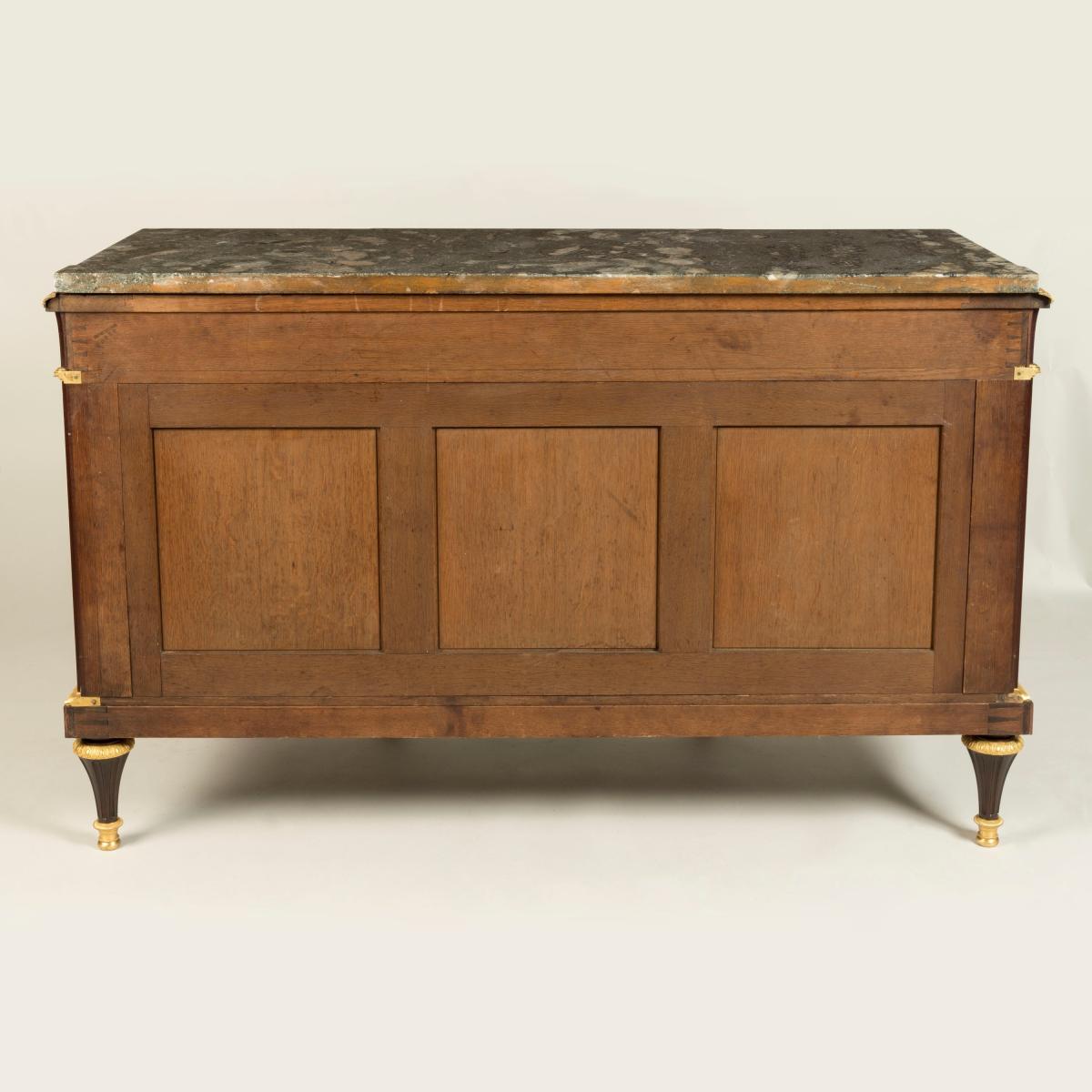
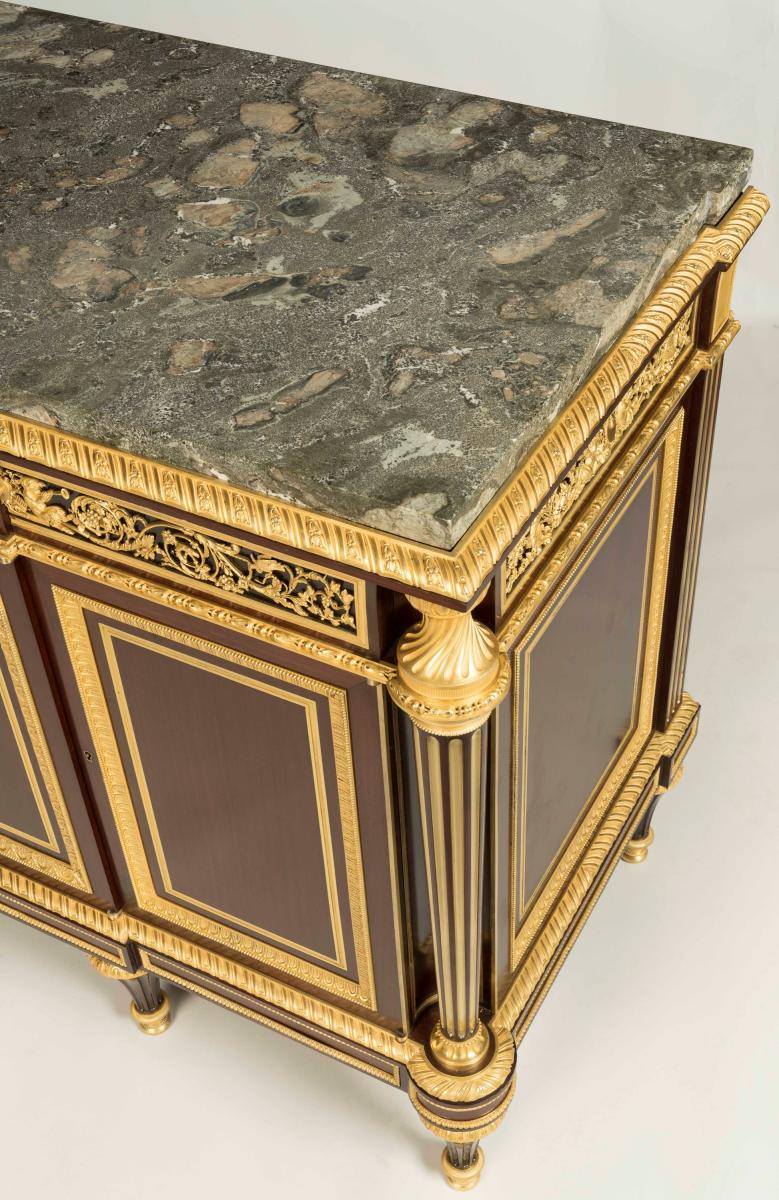
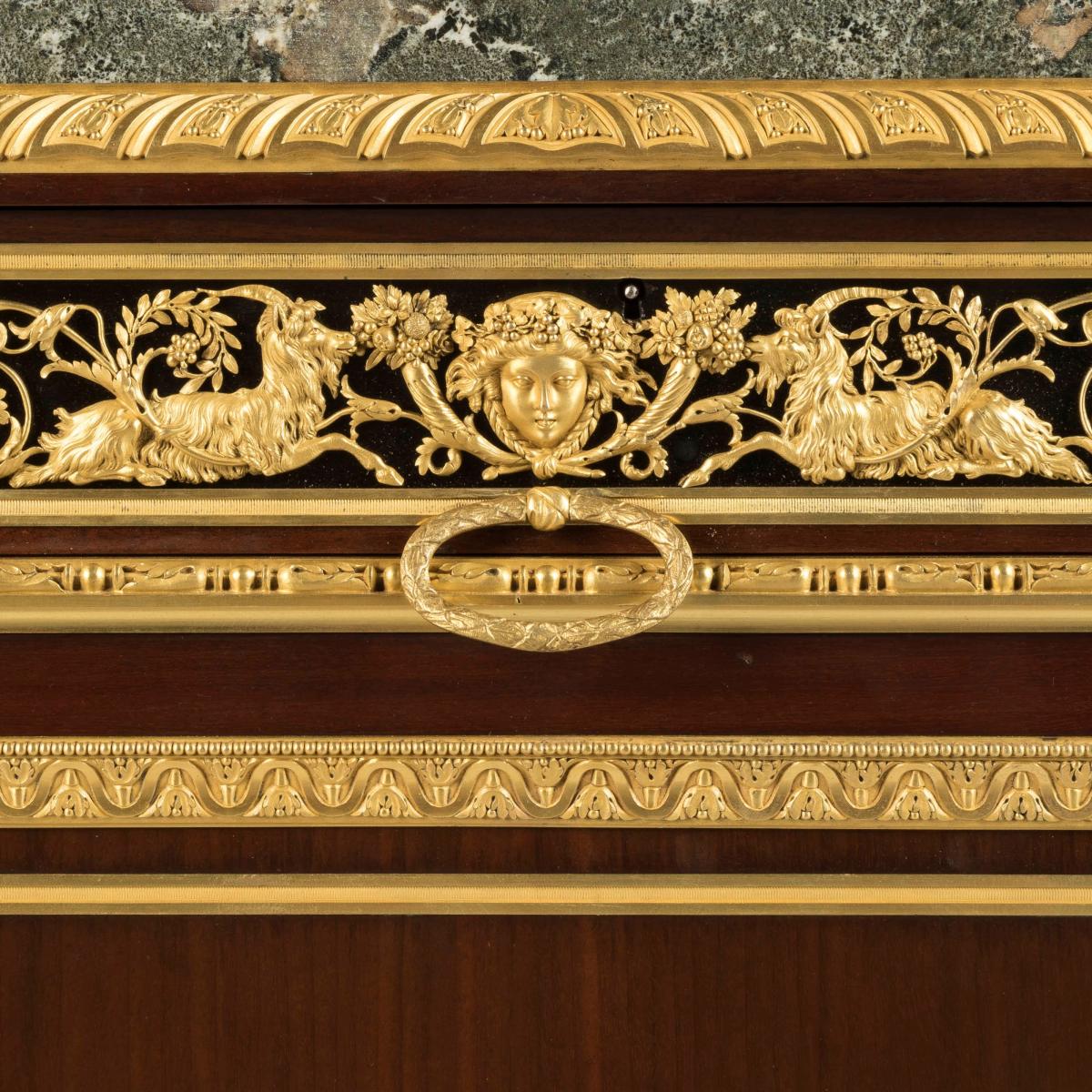
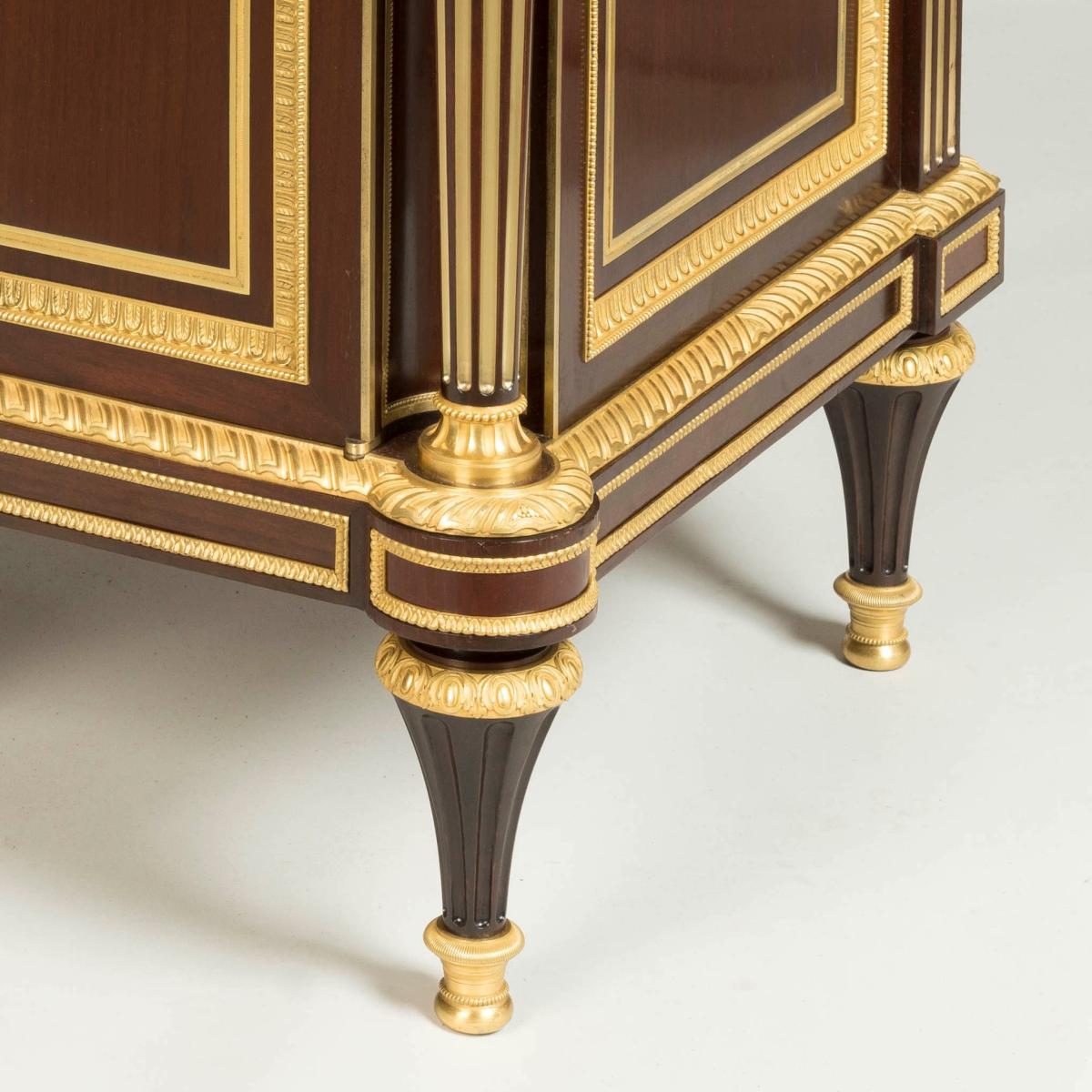
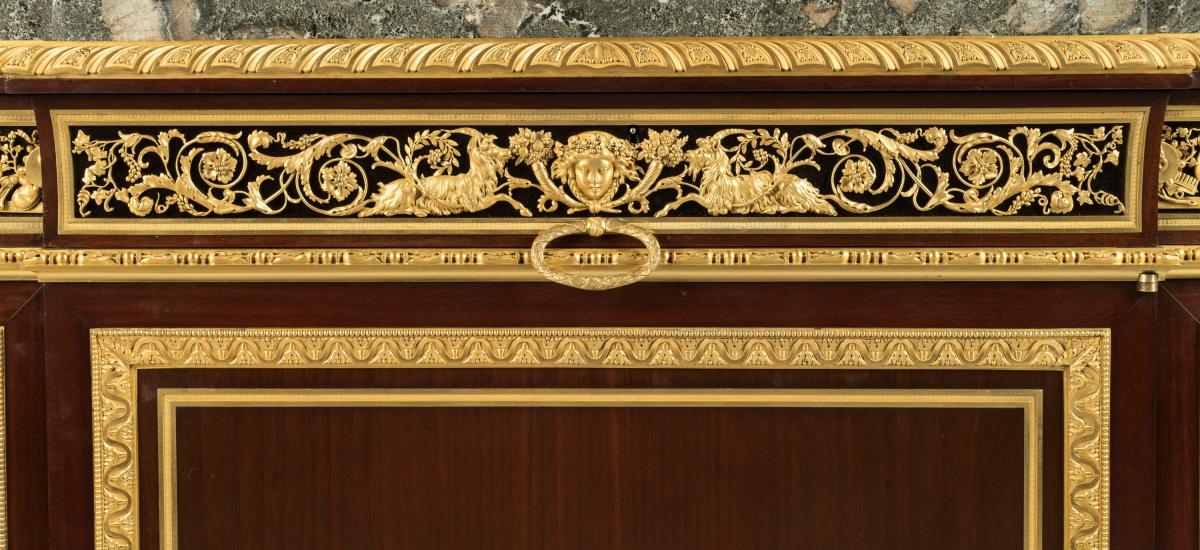
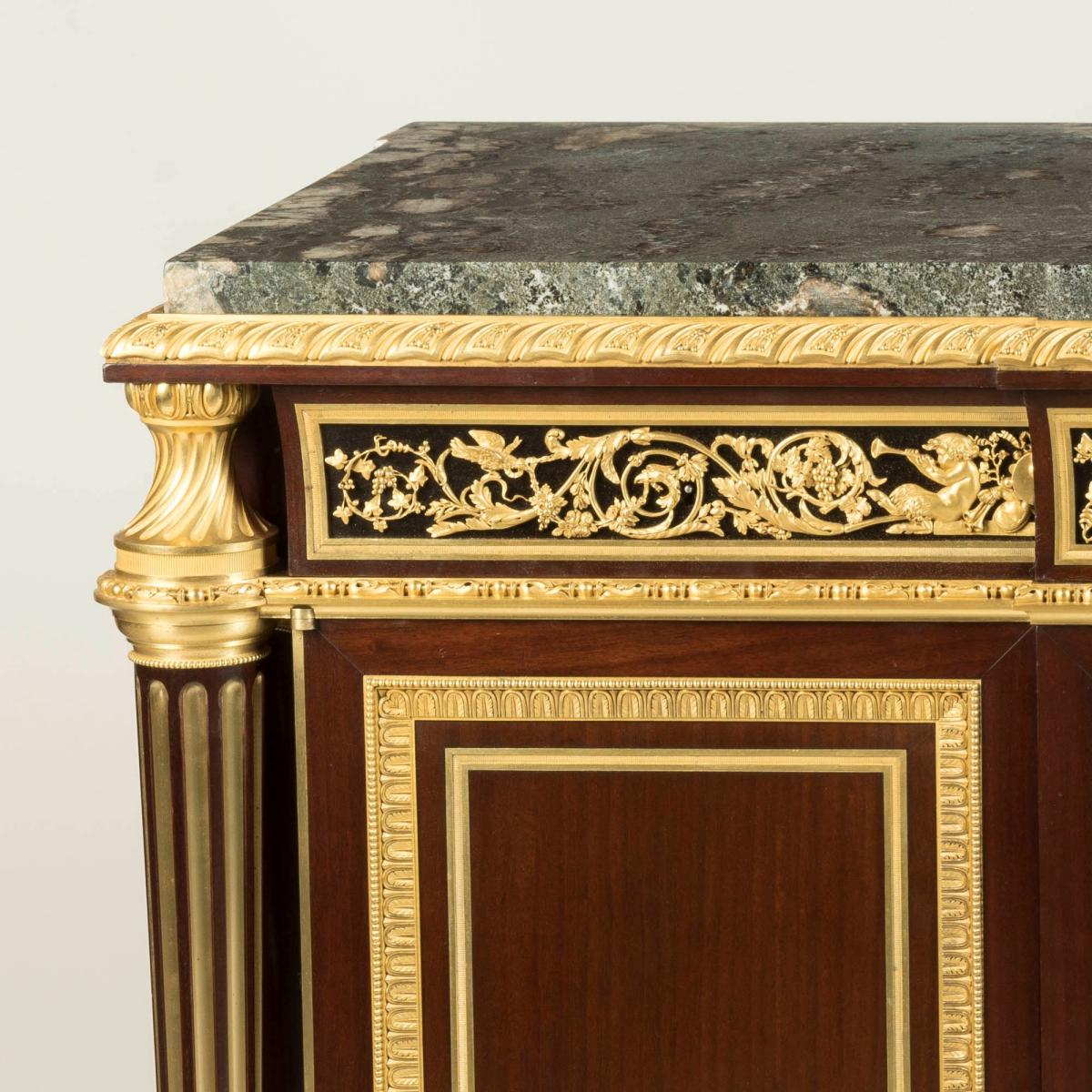
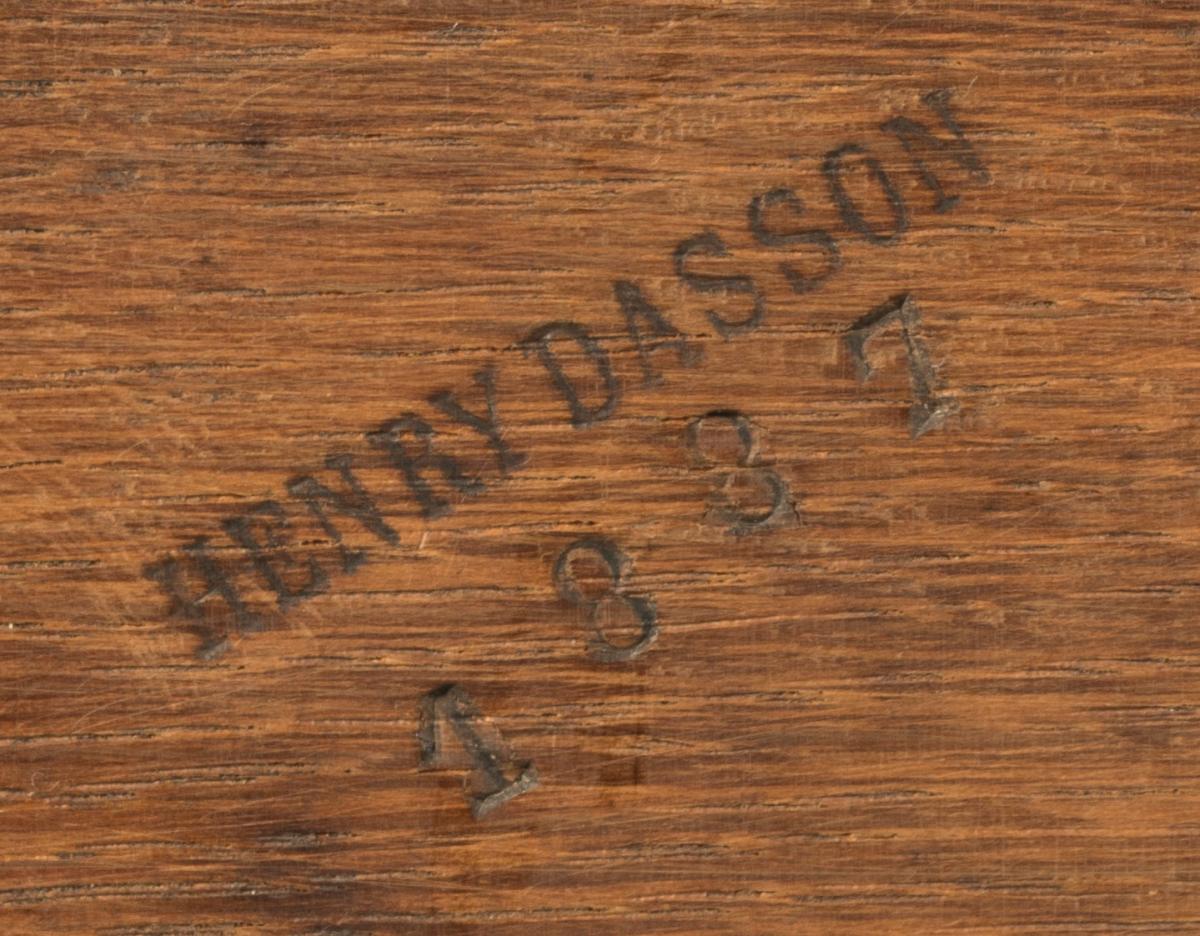
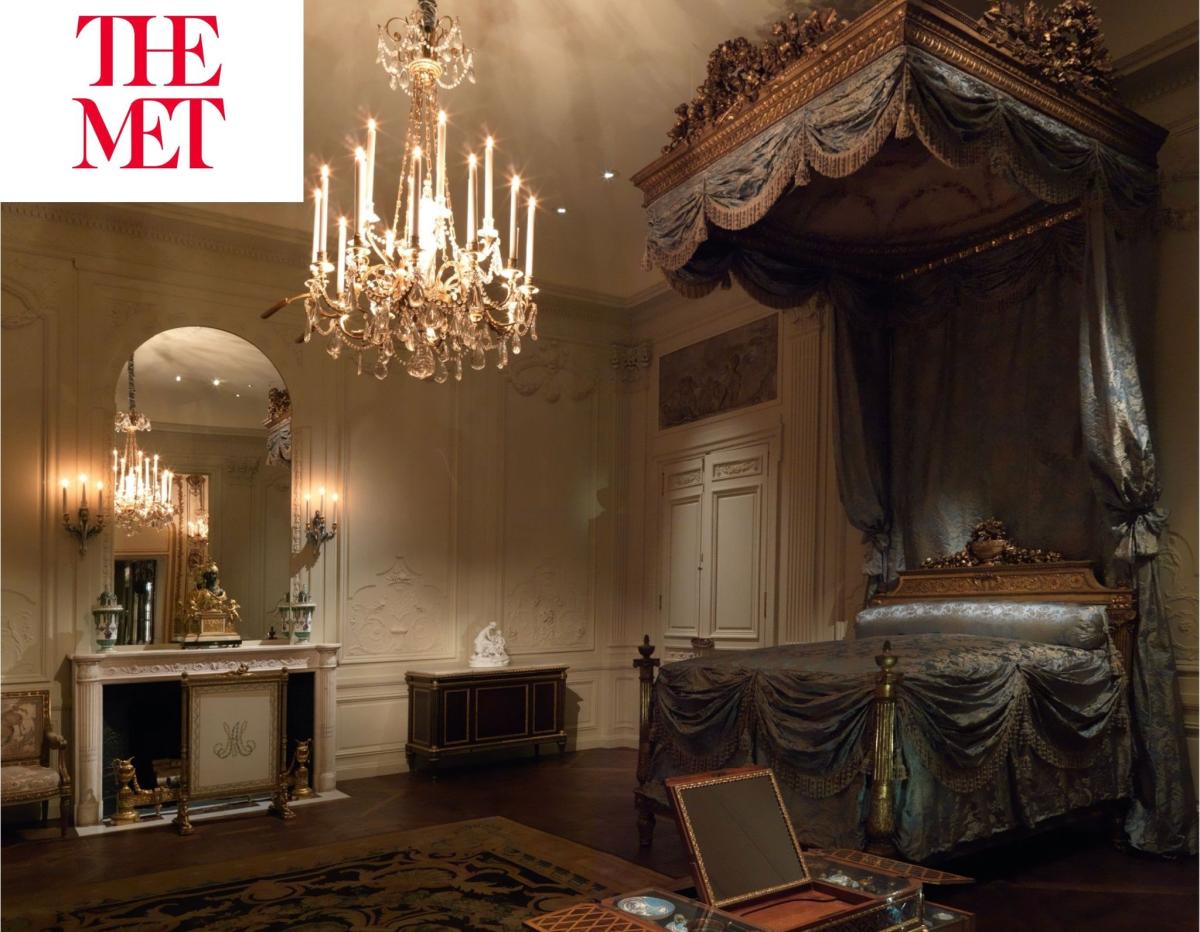
Price on application
This object includes complimentary, Insured Shipping / Delivery within the UK
This object is eligible for a Certificate of BADA Provenance
The BADA Standard
- Since 1918, BADA has been the leading association for the antiques and fine art trade
- Members are elected for their knowledge, integrity and quality of stock
- Our clients are protected by BADA’s code of conduct
- Our dealers’ membership is reviewed and renewed annually
- Bada.org is a non-profit site: clients deal directly with members and they pay no hidden fees
An Important Louis XVI Style Commode by Henry Dasson.
After the Design by Adam Weisweiler.
For the King's Cabinet at Saint-Cloud.
Constructed from mahogany and incorporating well-cast and chased ormolu mounts, the breakfront side cabinet supported on six fluted toupie feet, the sides and tripartite front all paneled with ormolu double borders with three doors enclosing a shelved interior; the corners with distinctive freestanding and tapering columns, fluted and inlaid with brass filets, terminating in a 'torsade' gilded bronze capital flanking the frieze decorated with foliate rinceaux populated by ibixes and putti housing three lockable drawers below the Campan marble top in its gilded surround. Stamped twice to the carcass "Henry Dasson / 1887."
French, dated 1887
The present commode is Henry Dasson's rendition of the celebrated commode à vantaux made by Adam Weisweiler and supplied by his marchand-mercier Dominique Daguerre to King Louis XVI for his Cabinet du Roi at the Château de Saint-Cloud in 1788, today on view at the Château de Compiègne. Weisweiler produced a series of these breakfront commodes, all with slight variations, including a pair found at the Louvre and another at the Metropolitan Museum of Art.
Made almost exactly one century after Weisweiler's example, Dasson's impeccable craftsmanship pays homage to the great ébéniste of the Ancien Régime.
Henry Dasson (1825-1896)
Henry Dasson was a renowned Parisian furniture maker in the nineteenth century, known for his exquisite gilt-bronze mounted furniture. Unlike his contemporaries, Dasson initially pursued a career as a bronze sculptor, which influenced the exceptional quality of his bronze work and intricate chiseling.
Dasson operated his workshop at 106 rue Vieille-du-Temple in Paris, specializing in crafting furniture in the styles of Louis XIV, XV, and XVI. In 1871, Dasson acquired the thriving business and remaining inventory of Charles-Guillaume Winckelsen, a well-regarded furniture maker renowned for his superior craftsmanship. It is believed that Dasson inherited the art of ciseleur (chiseling) from Winckelsen.
Dasson showcased his works at the 1878 and 1889 Paris Expositions Universelles, exhibiting pieces in the styles of Louis XV and XVI, as well as his own modified eighteenth-century designs. Lord Dudley and Lady Ashburton were among his renowned clients at the exhibitions, as well as the English Royal Family.
Made a chevalier of the Légion d'honneur in 1883, he was elevated to an officier in 1889, following his success at the Paris Exposition of the same year. Dasson ceased production in 1894, and the enduring reputation of the finest maker of gilt-bronze mounted furniture was echoed and acknowledged when his contemporaries Paul Sormani, J.E. Zwiener, Maison Millet, and Beurdeley all jumped at the chance to acquire drawings and models by Dasson. Nevertheless, the pieces created by Dasson remain without equal, and stand at the epitome of nineteenth-century French furniture.
Literature:
Kjellberg Pierre. Le Mobilier Français Du Xviiie Siècle. Editions De L'Amateur, 2002, pp.905-6, for a discussion of the Weisweiler commodes.
Lemonnier Patricia. Weisweiler. Editions D'art Monelle Hayot : Vilo, 1983, pp.60-61, p. 133 & p. 174 (no. 8), for the Weisweiler commode.
Mestdagh, Camille, and Pierre Lécoules. L'ameublement d'art français 1850-1900. Paris: Éd. de l'Amateur, 2010, p. 253, illustrating another version by Henry Dasson.
Payne, Christopher. Paris Furniture: The Luxury Market of the 19th Century. Château de Saint-Rémy: Éditions Monelle Hayot, 2018, p. 216, for a discussion of the 19th century versions.
Dimensions
H: 36.5 in / 92 cm | W: 57.5 in / 146 cm | D: 23 in / 58 cmPrice on application
This object includes complimentary, Insured Shipping / Delivery within the UK
This object is eligible for a Certificate of BADA Provenance
Condition report
Excellent conditionStock number
10031The BADA Standard
- Since 1918, BADA has been the leading association for the antiques and fine art trade
- Members are elected for their knowledge, integrity and quality of stock
- Our clients are protected by BADA’s code of conduct
- Our dealers’ membership is reviewed and renewed annually
- Bada.org is a non-profit site: clients deal directly with members and they pay no hidden fees


